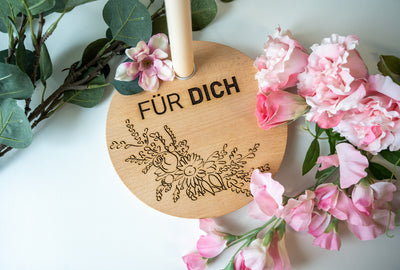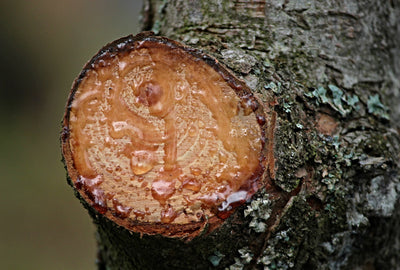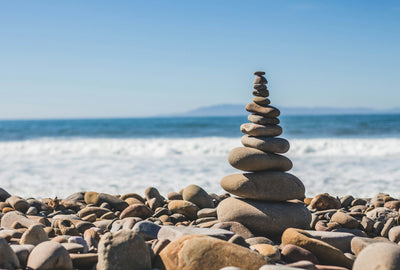Wood is in great demand as a material in the design of a wide variety of things. Thermowood is a popular domestic wood that has the quality of tropical wood. Read everything you need to know about this modified blade here. What is thermowood, how is it made, what is it made of, and what are its properties? What are the advantages and disadvantages of thermally treated wood, what can you use it for, how to process and clean it?
What is thermowood?
Wood is a popular building material that you can use in a variety of ways. Thermowood is becoming more and more important as an environmentally friendly alternative to tropical wood . It is thermally modified. The end product is created, so to speak, by a thermal process with which solid wood is treated. It is based on:
- temperature
- Steam
- drying
- temperature rise
- thermal treatment
Thermal treatment changes the wood and preserves its properties.
How is thermowood made?
The wood of native trees usually only has a limited shelf life when used outdoors. It can be made more weather-resistant using special processes. This includes the treatment with heat, with which the thermal wood is created. This is done by heating it with hot steam while the oxygen supply is low so that the wood does not start to burn.
The temperature is at least 160 to 250°C. Drying to zero percent wood moisture is important, since the thermally treated wood usually has a moisture content of around five percent when it is delivered. This is followed by the temperature increase and thermal treatment, which takes place entirely without chemicals. The structure of the wood changes. The processing improves, for example, durability, durability and resistance to moisture. The heat also seals the surface so that fungi and other harmful or even wood-destroying organisms no longer pose a risk.
Production overview
- Initial heating of the wood to around 100° C
- Preconditioning and drying phase to eliminate wood moisture
- high temperature phase
- Cooling phase to restore the ideal humidity level
In the vacuum press drying process, the heat is transferred with the help of heating plates. In Europe, most thermowood is produced in Finland. The first industrial systems were used here at the end of the 1990s. Other countries are Austria, the Netherlands and France.
What is thermowood made of?
The wood is made from local wood species, for example:
- ash
- beech
- Jaw
- Spruce
So it's a responsible choice, ecologically speaking. Depending on which wood is used, it is called thermo ash, for example, which is the pinnacle of thermo wood. In addition, the beech is a popular tree.
What properties does thermowood have?
Thanks to the thermal treatment, which improves the properties of the material, the wood scores with positive properties such as:
- resilience
- Significantly more weather resistance
- Longer outdoor life
- Improved form stability
- surface hardness
- Better thermal insulation properties
- Resistance to fungi, microorganisms, insects, mould and rot
- Reduction in water absorption capacity
- Thermal insulation benefits
This means that local woods can also be processed and used outdoors and in wet areas. As the wood becomes more resistant to moisture as a result of the thermal treatment, it swells and shrinks less. Even over the years, it retains its original shape.
The beautiful grain is retained by the thermal treatment. The dark colouring that the wood gets looks particularly elegant. Thermally modified wood is also much lighter than conventional wood due to the low moisture content. The pleasant feel without splinters is also an advantage. This makes it suitable for barefoot use. With proper care, thermowood can be used outdoors for 30 years or more. Ultimately, the exact properties vary considerably depending on the type of wood and process treated.
What are the advantages of thermowood?

Compared to tropical wood, which endangers the rainforest, the wood is an environmentally friendly alternative because it is native wood. Thermally treated wood can be fully recycled and disposed of by incineration. In addition, it does not have to be chemically treated. Due to the reduced thermal conductivity, the insulation and energy balance are improved.
The wood is more resistant to fungi, insects and other pests that degrade it, resulting in a shorter lifespan. It is also more resistant to weather influences. The low moisture absorption reduces the risk of the wood "working". If you compare the price of the wood with its durability, the price/performance ratio is very good.
What are the disadvantages of thermowood?
The wood is not UV-resistant, as is known from any conventional untreated wood, and should almost always be surface-treated depending on the intended use. Suitable products for outdoor use include:
- oils
- wood protection
- paintings
The oil also closes the pores, making it harder for dirt to settle. This simplifies cleaning. Suitable for indoor use:
- paints
- wax
UV rays cause untreated wood to fade and turn grey. Graying does not affect durability . Moisture is removed from the wood during thermal treatment. This has the advantages mentioned. At the same time, however, it also becomes more brittle and less solid. This is especially true for conifers. Therefore, do not use the thermal wood as a load-bearing component, for example for a carport.
What can thermally treat wood be used for?

Thanks to the thermal treatment, local woods can be used that were previously only reserved for tropical wood such as teak. Outdoors, where the challenges are significantly more demanding, they can be used for the following, for example:
- facade cladding
- garden houses and furniture
- Gates
- fences
- decking boards
- trellis
- Flowerpot
- playground equipment
The wood is also often used in the sauna area. It is also used indoors for floors, walls and ceilings. Furniture made of thermowood impresses with its special look and color scheme.
What types of thermowood are there?
In principle, any wood is suitable for thermal treatment. However, most manufacturers use hardwoods such as ash, alder, beech and birch as well as softwoods such as pine and spruce.
How can thermowood be processed?
The wood is easy to work with and process. So it is a popular material among craftsmen and do-it-yourselfers. Common methods are also possible, just like with other woods, for example:
- saws
- Drill
- Ribbons
- milling
- planing
Laser cutters are well suited because they can be used universally, even for fine work. You can easily cut and engrave wood with it. The drier and less resinous the wood is, the lighter the cut edge. Hardwood produces darker engravings and softwood produces lighter engravings. If screws are used, they must be made of stainless steel. Do not use nails or staples as the wood is comparatively brittle. The edges could break off. A coarse-toothed saw can cause chipping. If necessary, use dowels and wood that have also been thermally treated to avoid differences in swelling and shrinkage. Water-based glues are often not suitable for thermal wood. Use 2-component glue.
How do I clean thermal wood?
Thermowood is basically low-maintenance and very durable in the outdoor area. It does not need regular painting. Nevertheless, caring for the wood can be worthwhile. You can oil it to prevent graying and make cleaning easier. Dirt has a harder time sticking to oiled wood.
Conclusion on thermal wood
Thermowood, i.e. domestic, thermally modified wood, has been pre-treated by the action of heat without the use of chemicals. This improves durability for outdoor use. Thermowood is very hard and dimensionally stable. From an ecological point of view, it represents an environmentally friendly alternative to tropical wood due to the significantly resource-saving extraction and shorter transport routes. There are many possible uses.



